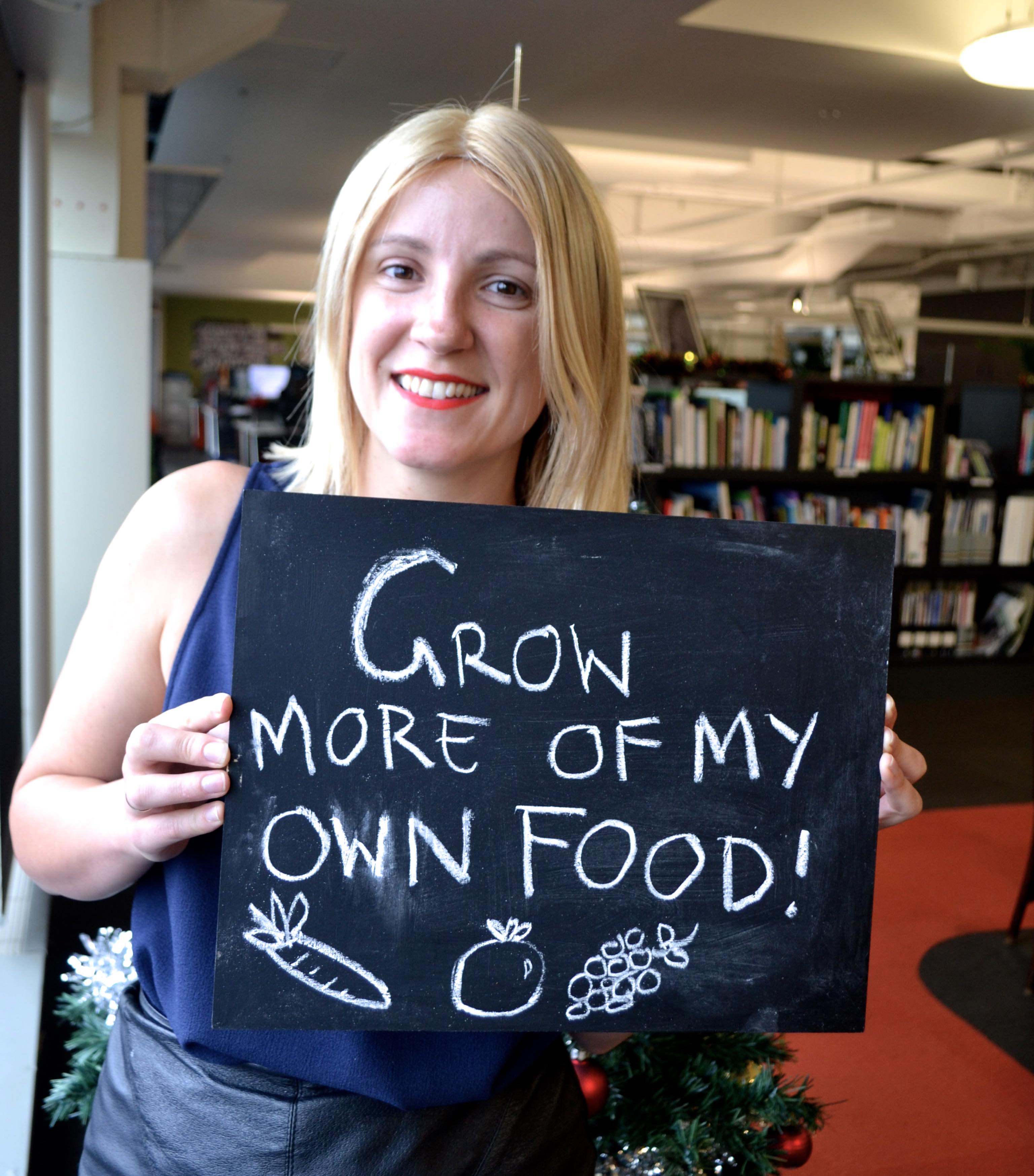Can you cut 1 Tonne of carbon pollution out of your life?
Take the challengeAt the beginning of the year, the 1 Million Women team decided to set our intentions for 2016. Some of us wanted to learn to compost, DIY, or conquer energy efficiency. I decided that I would like to start growing some of my own food.

I grew up in a very hot, desert town at the top of Western Australia. The majority of our food was trucked in from all over Australia (and the world). It would arrive slightly floppy and looking lacklustre. I'm ashamed to admit it, but it wasn't until I was in the later years of high school that I realised food was seasonal. I knew that mangoes came but once a year. Mango trees were abundant in our area and the wet season meant you'd see them weeping from trees, you couldn't give them away. We'd eat mango ice-cream, mango chutney, pickled-mango, mango and coconut rice. But apart from that, the rest of our food supply was dutifully trucked in at the start of the week. No matter the season there would be a constant influx of the usual suspects.
Fast-forward 10 years later and I am still trying to develop a relationship with what ends up on my plate, a big part is eating seasonally. However, as always, one idea begets another and I am now thinking about the freely available food that sits waiting, unapreciated at our feet.
"Weeds are the ultimate convenience food. They ask of you no money, no search for a parking spot at the supermarket, no planting, no watering, or any other maintenance whatsoever."- The Weed Foragers Handbook
When we think of weeds it's often in relation to a war being waged; in our gardens, springing up on the side of buildings, or working their way into potted plants. Weeds are a nuisance. But they're also an underrated source of nutrients and vitamins. While a diet comprised wholly of foraged foods isn't going to be enough to sustain you, weeds can often compliment a dish or replace ingredients you'd otherwise pay for at the grocer.
"Taken as a whole, weeds are not so much a botanical as a human psychological category."- Professor William Stearn

Gastronomic weed salad, image: The Girl Who Knows
Before you start foraging there are a few guidelines you should consider. The following have been taken from The Weed Forager's Handbook, written by Adam Grubb & Annie Raser-Rowland. It's a great resource for anyone who would like to become more adventurous with their food!

Foraged goods, Image: Geoff Dann
10 Guidelines for Foraging Food
- Identify your plant beyond a shadow of doubt.
- Pick young - picking fresh young leaves at the growing point of the plant will generally give you a milder, juicer leaf with fewer fibrous bits.
- Pick tender - for the same reasons as above, choose plants that look healthy and are growing in good soils with available moisture.
- Pick greens before flowering - as with most plants, weeds become much tougher and more bitter after they start to flower.
- Avoid stems - they can be tough and fibrous.
- Be mindful of pollutants - these could include traffic fumes, stormwater run-off, polluted water bodies, industrial pollutants, and lead paint flaking from house walls.
- Be mindful of herbicides - check your local laws to be sure, but most councils require that sprayed areas are marked with signs. Some municipalities colour their herbicides with dye
- Be persistent - don't be put off by one experience with a weed that's been too tough, sour or bitter for your taste. It may taste quite different growing in a different spot.
- Experiment - with ways to use your newfound culinary ingredients.
- Relish - the experience!
I'll be posting about my journey into foraged foods over the next few months. In the meantime, why not get to know some native ingredients? Like lemon myrtle and wattleseed.
Banner Image: Shutterstock
Read this next: Top 10 Native Ingredients To Bring Into Your Kitchen

